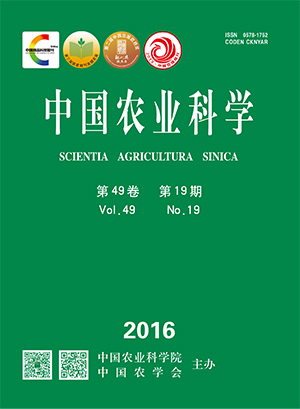-
Eco-Economic Potential Analysis of Chinese Main Crops’ Bio-Energy Utilization Straw Resources
- ZHU Kai-wei, LIU Zhen, HE Liang-ping, LIN Jin-chai
-
Scientia Agricultura Sinica. 2016, 49(19):
3769-3785.
doi:10.3864/j.issn.0578-1752.2016.19.009
-
 Abstract
(
665 )
Abstract
(
665 )
 HTML
(
3 )
HTML
(
3 )
 PDF (656KB)
(
739
)
PDF (656KB)
(
739
)
 Save
Save
-
References |
Related Articles |
Metrics
【Objective】Realizing the reasonable development of straw resource on the basis of protecting environment has important significance to Chinese agricultural bio-energy development planning. And effective development of straw resource is also closely related with cost. Thus, from the perspective of protecting environment and cost, this study analyzed the eco-economic potential of main crops’ energy utilization straw resource in different regions, which can provide reference for the layout of agricultural bio-energy industry, prior suitable regions for straw energy utilization project, prior developing technology and government policy formulation.【Method】Based on the research for the studies on the relationship between straw returning amount and soil erosion, soil organic matter, and the crop yield, the concept of soil ecological reserve amount was put forward and the specific returning amount of different crop straws were concluded. Combining the crop yield, planting structure, and grass grain ratio in benchmark year with the soil ecological reserve amount and other straw usages, the total ecological energy utilization straw resource and straw resource density were calculated by regions. Analyzing the policies and costs of different straw energy utilization projects, four developing scenarios and project costs were designed, and the economic collecting radius in different ratio of return on investment (ROI) was calculated by regions. According to the density and economic collecting radius, straw economic collecting amount was calculated, and then comparing the economic collecting amount with the project’s theory straw demand, to conclude the eco-economic straw collecting amount and space distribution of different projects.【Result】The straws can be used for bio-energy are 86.61 million ton, mainly distributed in Guangxi, Sichuan, Shandong and Henan, and the main straws are those of potato, sugar and rapeseed straws. When ROI is 0, the available straw for 6 MW SDFPG, 25 MW SDFPG, 12 MW SGPG, BMF 5 000 t·a-1 and BMF 10 000 t·a-1, respectively, is 86.85, 86.55, 86.85, 33.15, 86.61 million ton at the current level technology and incentive policy. When ROI is 5%, the available straw for 6 MW SDFPG, 25 MW SDFPG, 12 MW SGPG, BMF 5 000 t·a-1 and BMF 10 000 t·a-1, respectively, is 79.43, 83.47, 83.47, 2.60, and 86.61 million ton. When ROI is 10%, the available straw for 6 MW SDFPG, 25 MW SDFPG, 12 MW SGPG, BMF 5 000 t·a-1 and BMF 10 000 t·a-1, respectively, is 18.53, 70.23, 70.68, 0, and 86.61 million ton. At current level technology and incentive policy, under different scenarios, the available straws for CE projects are always 0 in different ROI.【Conclusion】The existing policies have obvious incentives for power projects, the incentives for BMF 10 000 t·a-1 should be appropriately reduced, and the incentives for power projects should be increased. In straw energy industry layout, at present, as for the BMF 10 000 t·a-1, first priority should be given, then first priority should be given to Guangxi, Hubei, Guangdong, Anhui, and Hainan to build 12 MW SGPS, and then construction of 25 MW SDFPG should be considered in Guangxi, Hubei, Guangdong and Anhui, and finally, construction of 6 MW SDFPG in Guangxi should be considered. Now the cost of CE project is so high that it does not necessarily produce economic benefits in every region.









